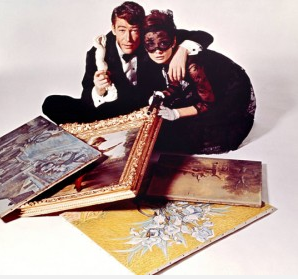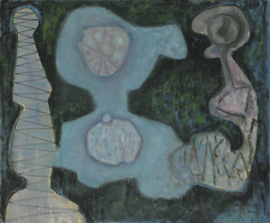Todays post comes from Delphine Douglas, class of 2018 and Art Center Multimedia Student Assistant.
Recently I’ve been exploring the prints of the Art Center. With curator Patti Phagan, the docents had the chance to take a crash-course on prints in the Art Center’s print room. We learned about different techniques including woodblock, etching, and engraving, and got to examine some examples of each from the collection. We also learned about the Warburg collection of prints, which was donated by the family of an important collector, Felix Warburg, and makes up a significant portion of the Art Center’s print collection. After leaving our lesson, we got the chance to look at some of the Old Master prints from the Warburg Collection that were up in the project gallery for Art 106. Among those were Durer’s St. Jerome in his Study (1514) and Rembrandt’s The Three Trees (1643).
The following week, the docents were again able to take advantage of Art 106’s installation in the project gallery to study the Japanese woodblock prints on display. We watched a video to better understand the general process, and then discussed the works on display including The Plateau of Fujimi (36 Views of Mt. Fuji) (1831) and Woman with Parasol in the Snow (18th c).
Looking at these very different techniques and styles, it seemed important to consider what it is about prints that’s unique, and ties both the Japanese prints and the Old Master prints together. When considering the Northern European works, we noticed the distinction made by art historians between prints that were reproductions of paintings, and prints that were original compositions. In the Japanese works we looked at, however, the compositions were all originally intended to be prints. We also discussed the importance of line and detail in both types of prints. I appreciated looking closely with a magnifying glass to see evidence of the print-making process and other details that would otherwise go unnoticed. In all it’s difficult to draw too many neat comparisons between the products of two distinct cultures, but I enjoyed learning about how similar artistic processes developed in different parts of the world and were then used to create very different art.


German, 1471-1528
St. Jerome in his Study, 1514
Engraving on cream laid paper
Gift of Mrs. Felix M. Warburg and her children
1941.1.25

Japanese, late 18th c – early 19th c
Woman with Parasol in the Snow, Nd
Woodblock print
Gift from the estate of Harriet Anderson, class of 1903
1971.35.7

Japanese, 1760-1849
The Plateau of Fujimi (36 Views of Mt. Fuji), 1831
Color woodblock print
X.191




